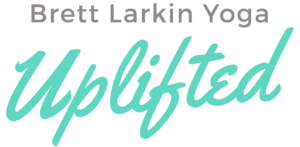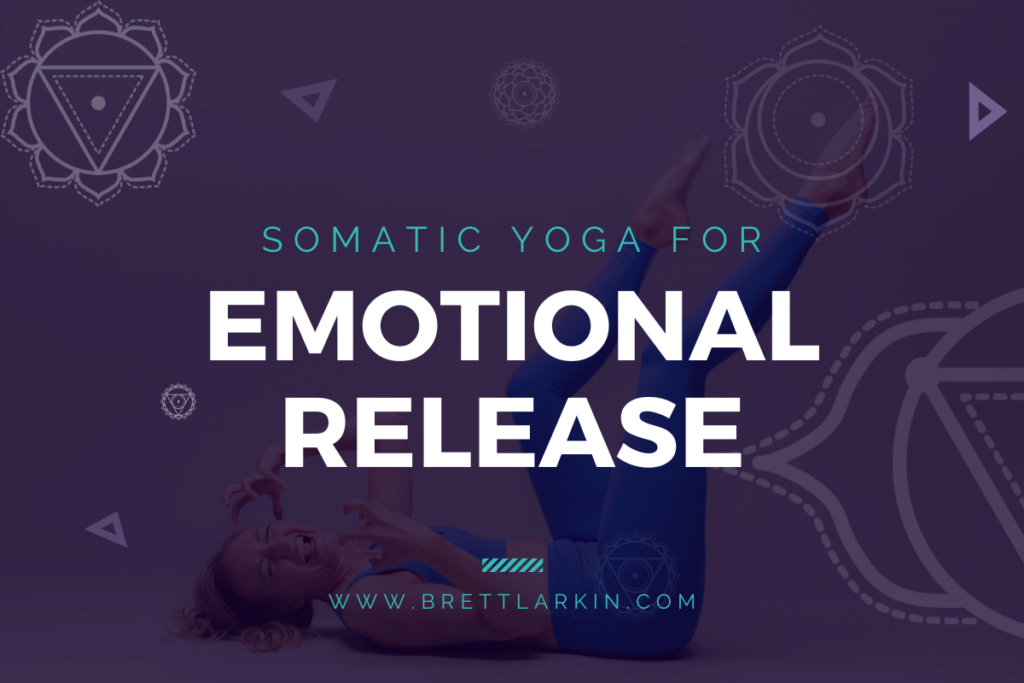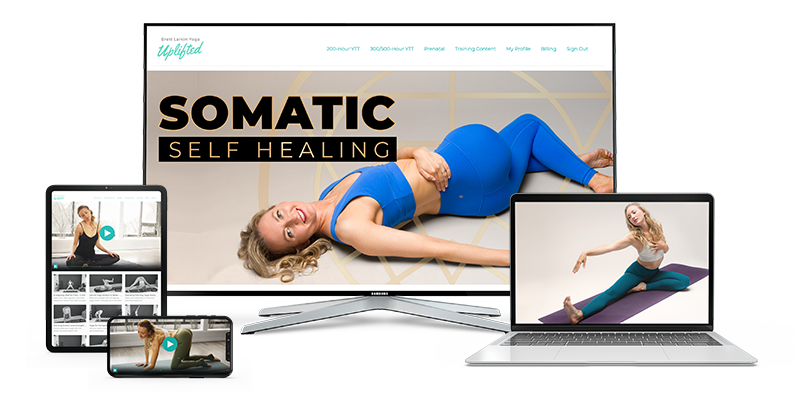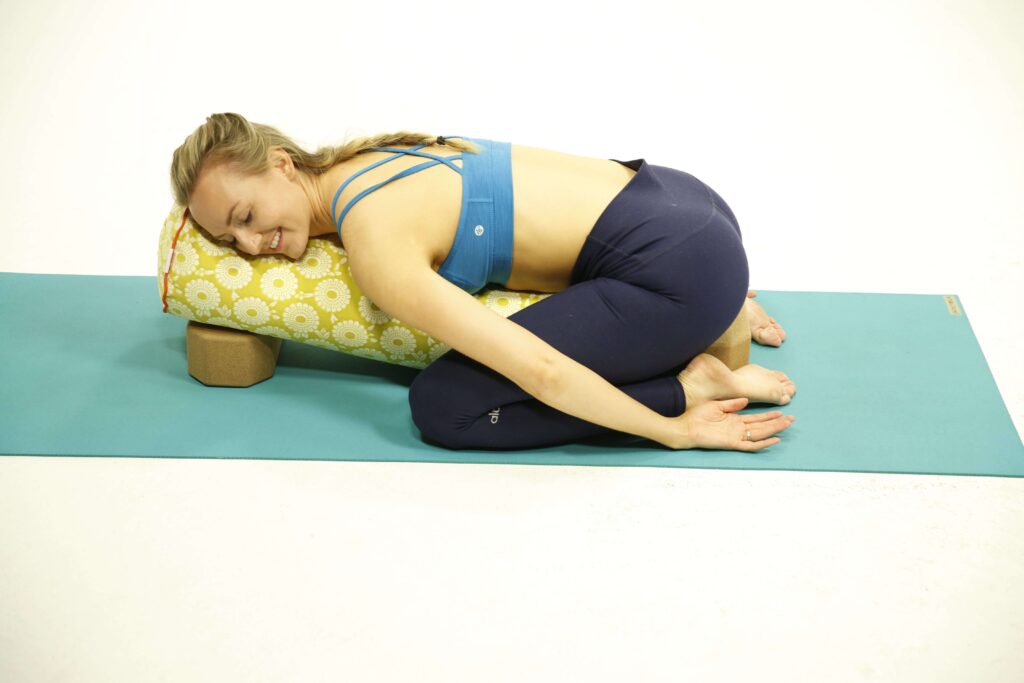Do you ever feel like you are just full of pent up emotions? And no matter how much “self-care” you do or how often you come to your yoga practice certain feelings just seem to linger?
This could be because you aren’t addressing the physical body or physical tension associated with those strong emotions.
Your traditional yoga class is great for increasing the connection between your body; and mind and you may have even had emotional release in pigeon pose before. But if you have difficult emotions that you are ignoring, it might not be enough. Sometimes releasing emotions needs to come from physical release as well. This is where a somatic yoga practice can help.
What Is Somatic Yoga?
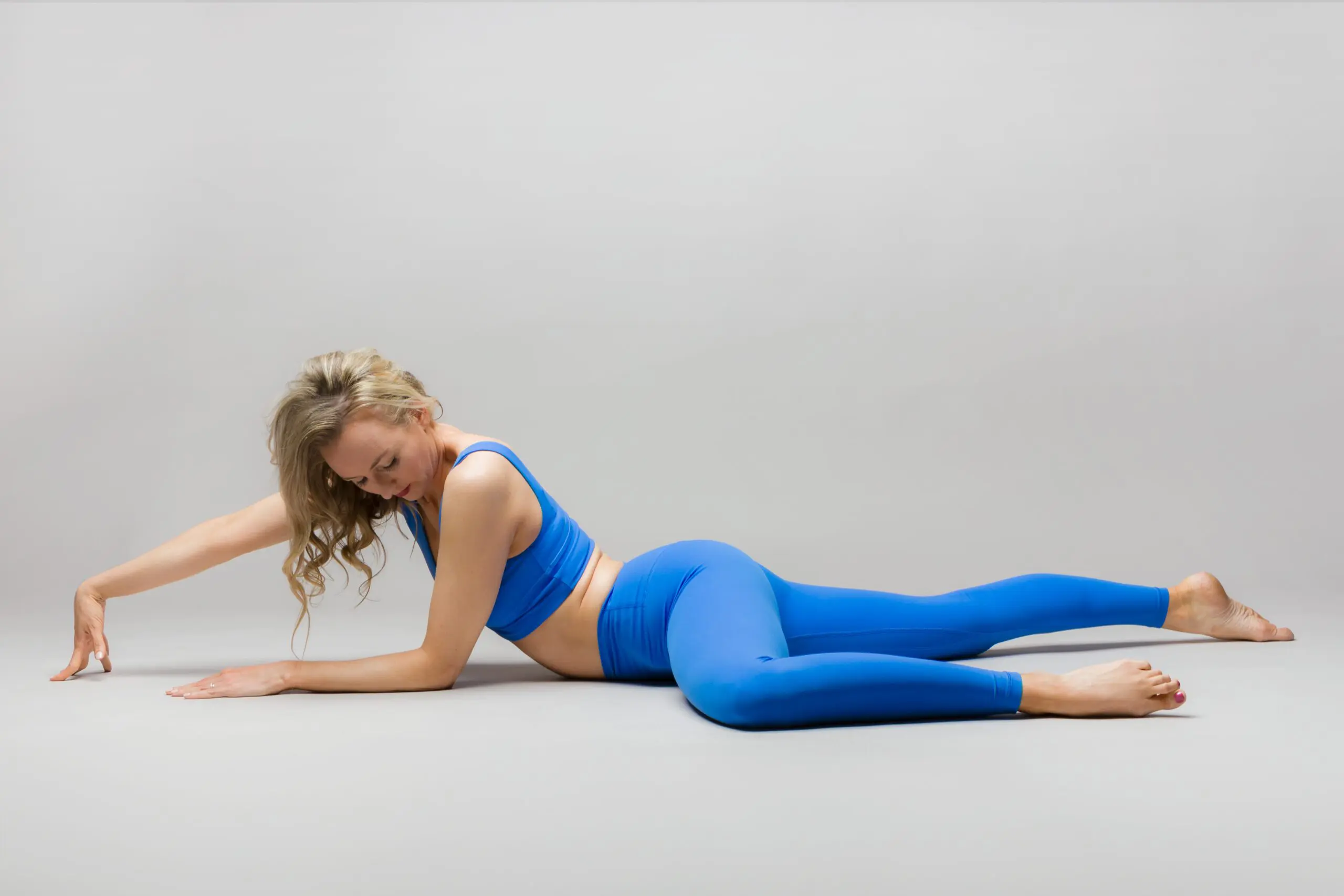
Somatic yoga is a mindful movement practice that combines principles of somatics with traditional yoga postures and techniques to address tension, stress, and physical symptoms at their root. By focusing on slow, intentional movements and sensory awareness, somatic yoga helps retrain the nervous system and restore natural movement patterns, making it particularly effective for releasing the stress response and stored tension while fostering a deep mind-body connection.
Somatic yoga goes beyond the physical benefits of traditional yoga by diving into the subtleties of body awareness. It emphasizes the importance of tuning into your sensations and releasing habitual holding patterns that often stem from stress, trauma, or poor posture. Unlike the fast-paced yoga styles you often see, somatic experiencing in yoga encourages a slow, exploratory approach, making it accessible for all levels and body types. It asks you to feel into the sensations or emotions that come up, to fully embody them and encourage release.
This practice can be especially transformative if you’ve been dealing with chronic pain, stress, or emotional blockages. This is because embodiment practices offer a gentle, therapeutic path to healing, self-discovery, and a healthy way to release trauma.
Somatic Healing Masterclass: Rewire Trauma, Reclaim Your Intuition (usually $67) FREE👇
FREE Feminine Form Embodied Yoga Masterclass (usually $67) Unleashing Pleasure + Intuitive Movement on the Mat
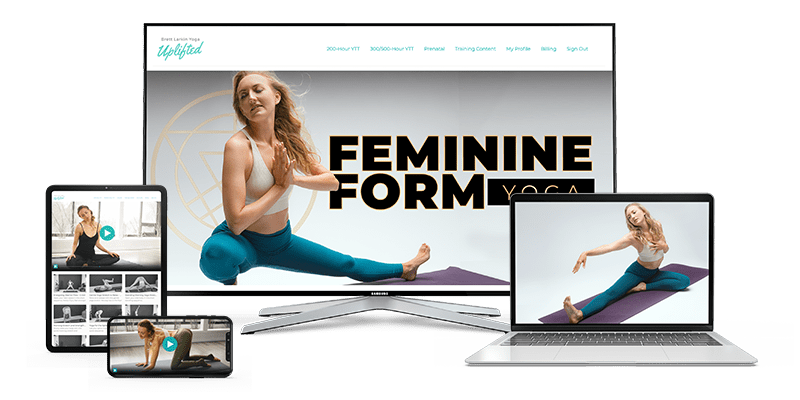
Somatics And Emotions

You’ve probably heard in your yoga classes that your body stores emotional experiences. This is absolutely true, particularly with stress and trauma being stored in the nervous system and musculature. I always like to say: time does not heal wounds, it covers them with fascia.
Somatic healing works by asking you to explore these wounds and feelings you may have been repressing. To bring mindful awareness to physical sensations and trust that your body knows how to process and release trapped emotions; through intentional movement, breathwork, and relaxation.
Research is beginning to support the idea that somatic practices can help release emotional tension, with studies showing a connection between somatic therapies and improved emotional regulation. Studies also show promising results of somatic experiencing in regulating symptoms of post traumatic stress disorder.
Does Somatic Yoga Release Emotions?
Yes, somatic yoga can release emotions by addressing how they are stored in the body. Emotional stress often creates physical tension, particularly in areas like the hips, shoulders, and diaphragm. Gentle somatic movements encourage a release of this tension, which can lead to an emotional catharsis as the body unwinds.
What Yoga Pose Releases Trauma?
Poses such as Pigeon Pose and Child’s Pose are commonly associated with yoga for emotional release and releasing stored trauma. These poses target areas like the hips and lower back, where emotional energy often accumulates. When you practice these slowly and with mindfulness, they create a safe space for emotions to surface and release.
What Is Somatic Therapy for Emotional Release?
Somatic therapy combines movement, breathwork, and awareness to process and release emotional experiences. By focusing on your body’s physical responses to stress, you allow for a direct pathway to release stored tension and heal unresolved emotional wounds. Techniques like grounding, self-soothing touch, and body scans are often incorporated into this approach. You have to feel to heal. Somatic therapy isn’t asking you to do it all at once, just to gently lean into your body’s sensations and emotions and feel them to close the stress cycle and release tension. Working with a licensed somatic therapist is a great way to do this.
Somatic yoga bridges the gap between the physical and emotional, making it a powerful tool for anyone seeking holistic emotional well-being and improved mental health. You can learn more and find a full library of my somatic practices in the Uplifted app.
Best Somatic Yoga Poses For Emotional Release
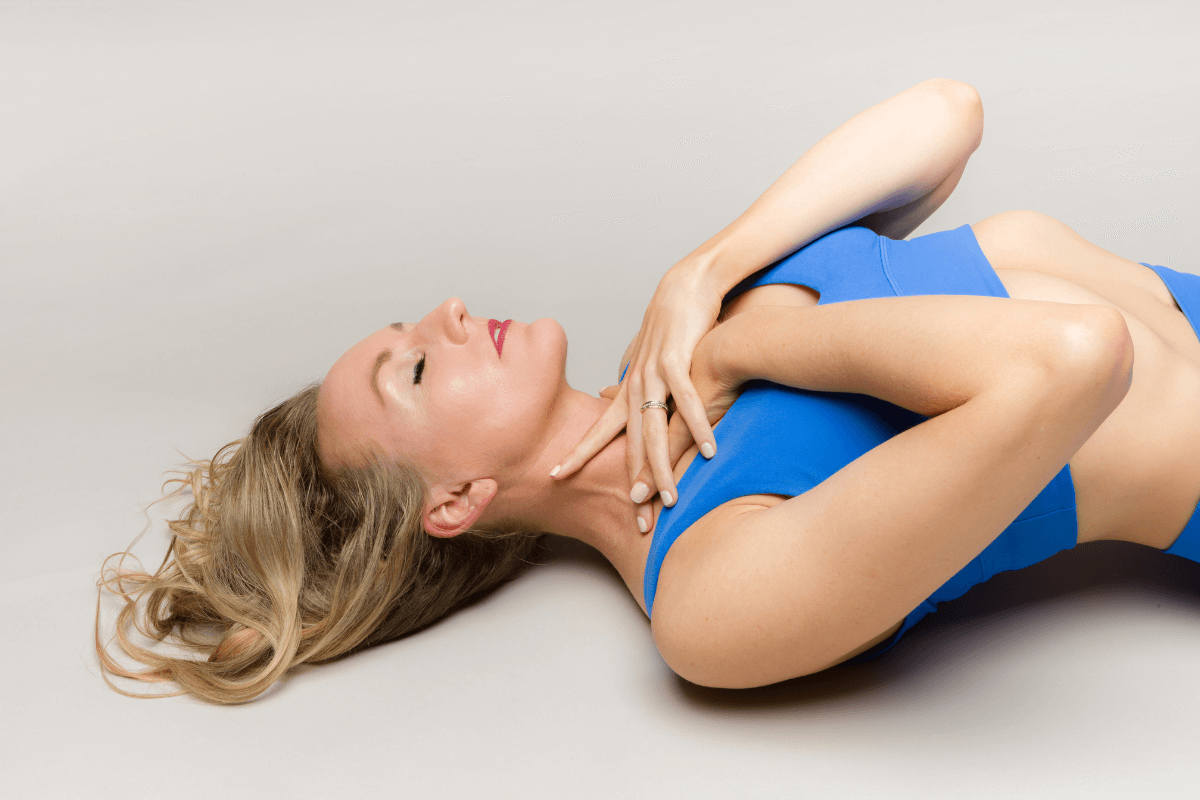
When looking for somatic yoga poses for emotional release you want to focus on gentle, mindful movements that target areas where emotional tension is often stored, like the hips, shoulders, and spine. You also want to try and move the body in new ways to help combat habitual bracing patterns. These movements encourage relaxation, nervous system regulation, and the processing of stored emotions. Below are some poses you can try.
You can also give this sequence a try or check out my full list of somatic classes on YouTube:
Hip Openers
Reclined Bound Angle Pose
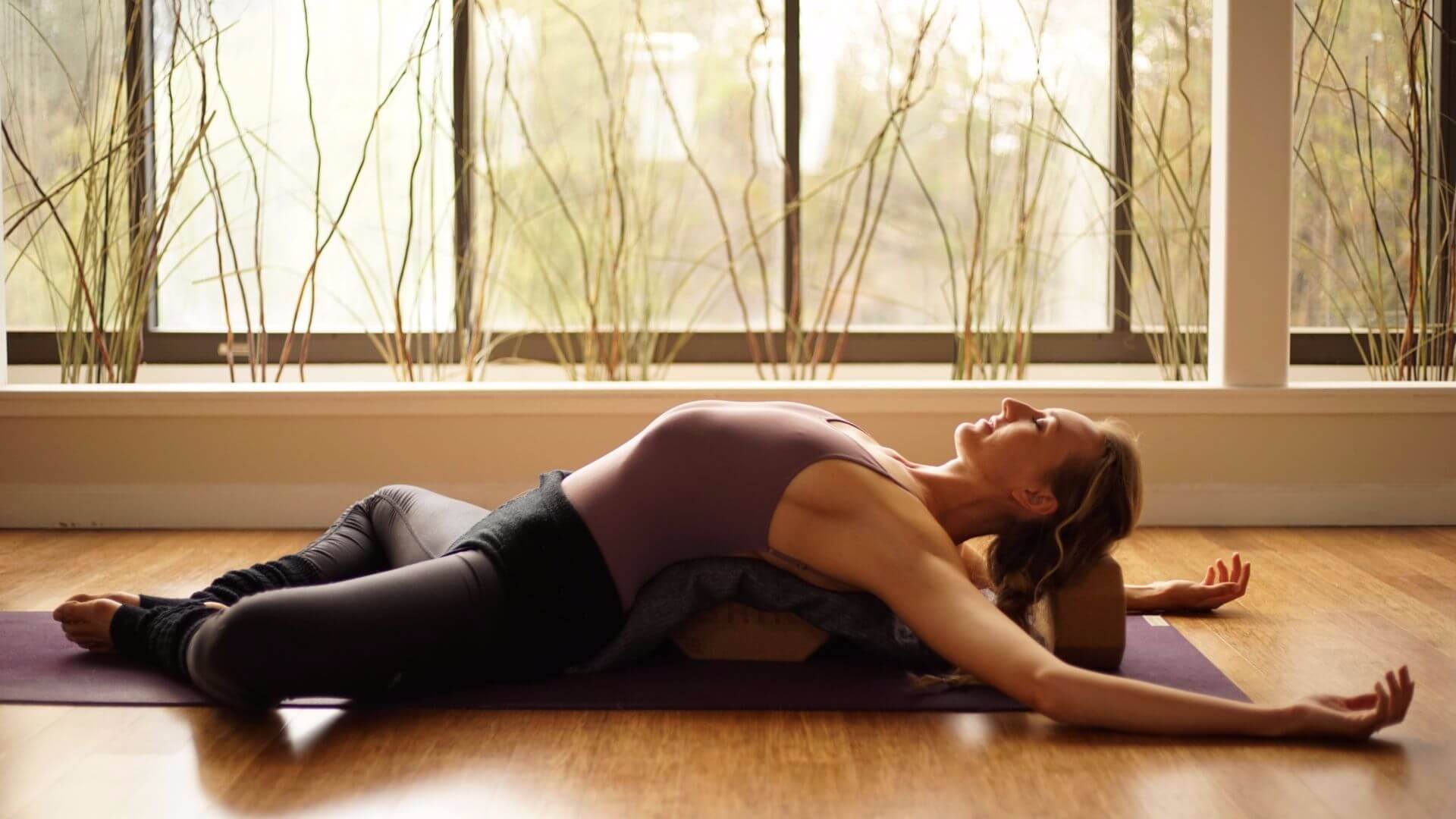
Lie on your back with the soles of your feet together and knees dropping open, supported both the upper body and the knees with blocks or blankets.
Variations: Add gentle rocking or incorporate breathwork.
Benefits: Opens the hips, a key area for emotional release, while promoting relaxation.
Pro Tips for Yoga Teachers:
- Have students place their hands on their belly. Follow the motion of the breathe with their hands. Notice what sensations come up in the body or the mind.
- Encourage students to open and close the arms or add in a butterfly hug to make this experience more soothing.
Figure Four Stretch
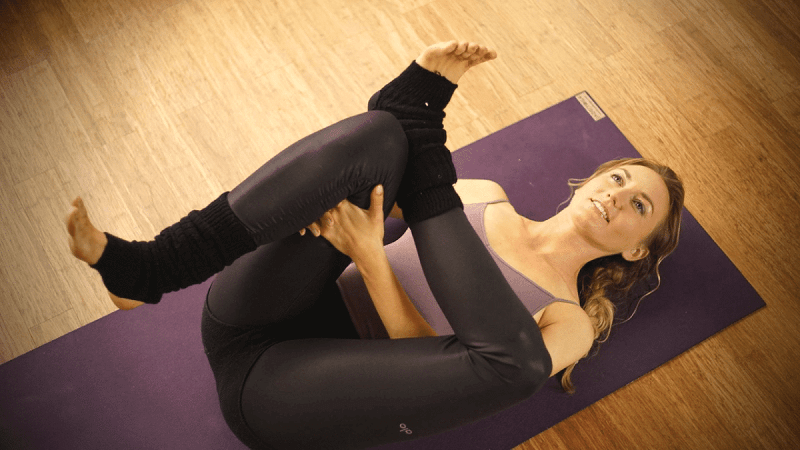
Lie on your back with the soles of your feet on the mat knees bent. Take the left foot across the right knee, making sure the ankle clears the knee. Stay here or hold the right thigh and gently pull towards the chest. Release and switch to the left knee on the other side.
Variations: Add gentle rocking back and forth or take the holding leg long to deepen the stretch. This can also be done in a chair if lying on your back is unavailable.
Benefits: Opens the hips and provides gentle release of the piriformis. Releases tension in the low back and hips where a lot of emotional tension is stored.
Pro Tips for Yoga Teachers:
- Encourage somatic release with circular movements. Whether its ankle rolls or moving the whole lower body in slow soothing circles.
- If doing this in a chair students can add a slow juicy spinal flex movement to this position, only as long as it feels good.
Goddess Squat
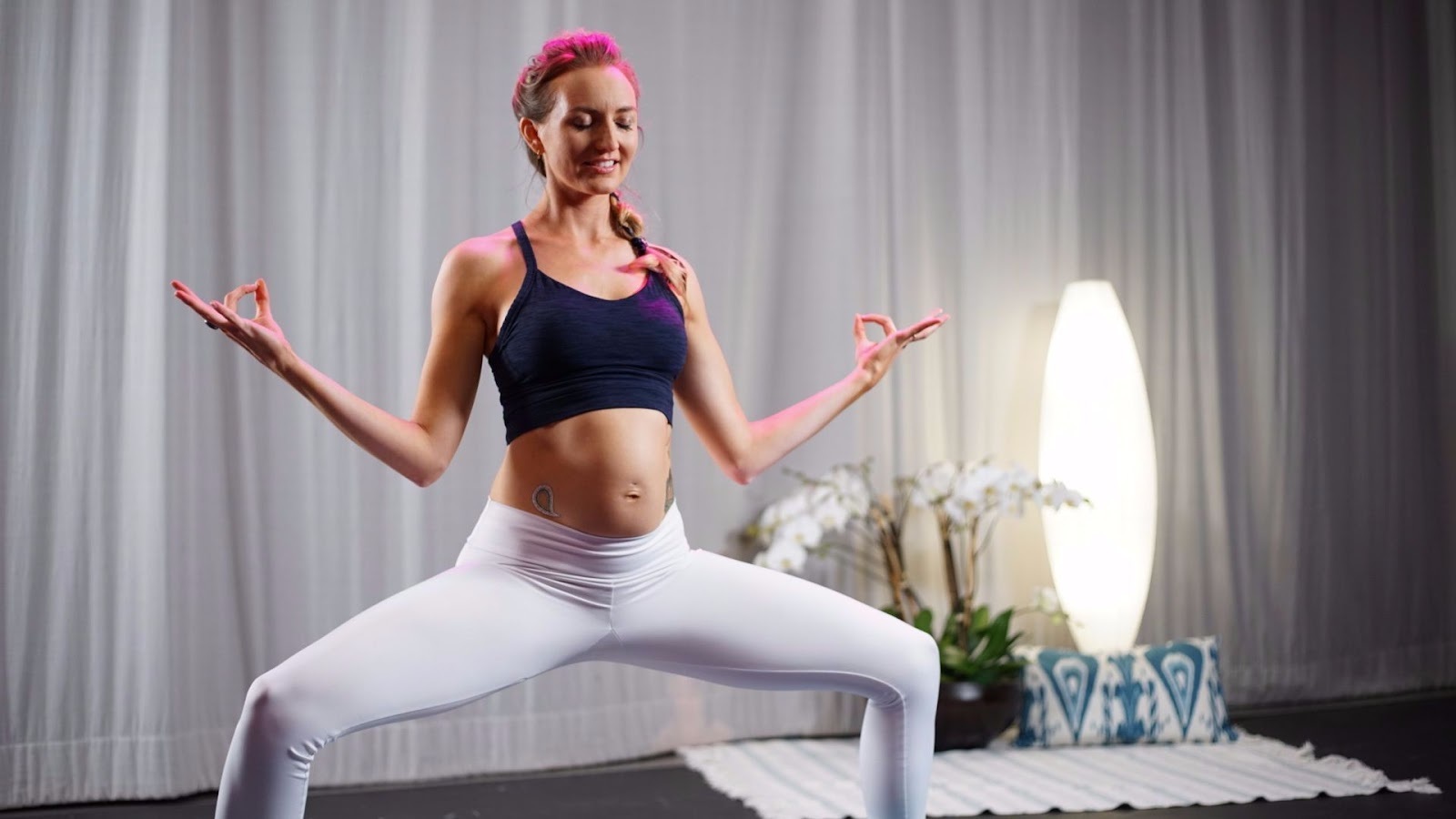
Take the legs wide, shoulder length apart, and point the toes outward. Inhale sweep the arms up overhead and as you exhale bend the knees deeply, arms should go into a goal post. Keep the spine tall. Adjust the feet as needed.
Variations: Take hands to your heart center if it bothers your shoulders or hold on to the back of a chair. Make this harder by lifting the heels.
Benefits: Improves posture and strength. Releases tension in the hips and builds confidence. Connects you to your divine feminine
Pro Tips for Yoga Teachers:
- Add fluid movement by bracing the hands on the thighs and rolling the upper body forward and then slowly rolling back up.
- Have students do some kundalini bear claws in this position to release any pent up anger, tension, or feminine rage.
Take my feminine energy quiz to get a recommended practice for balancing YOUR feminine energy 👇
Chest Openers
Cat-Cow Pose
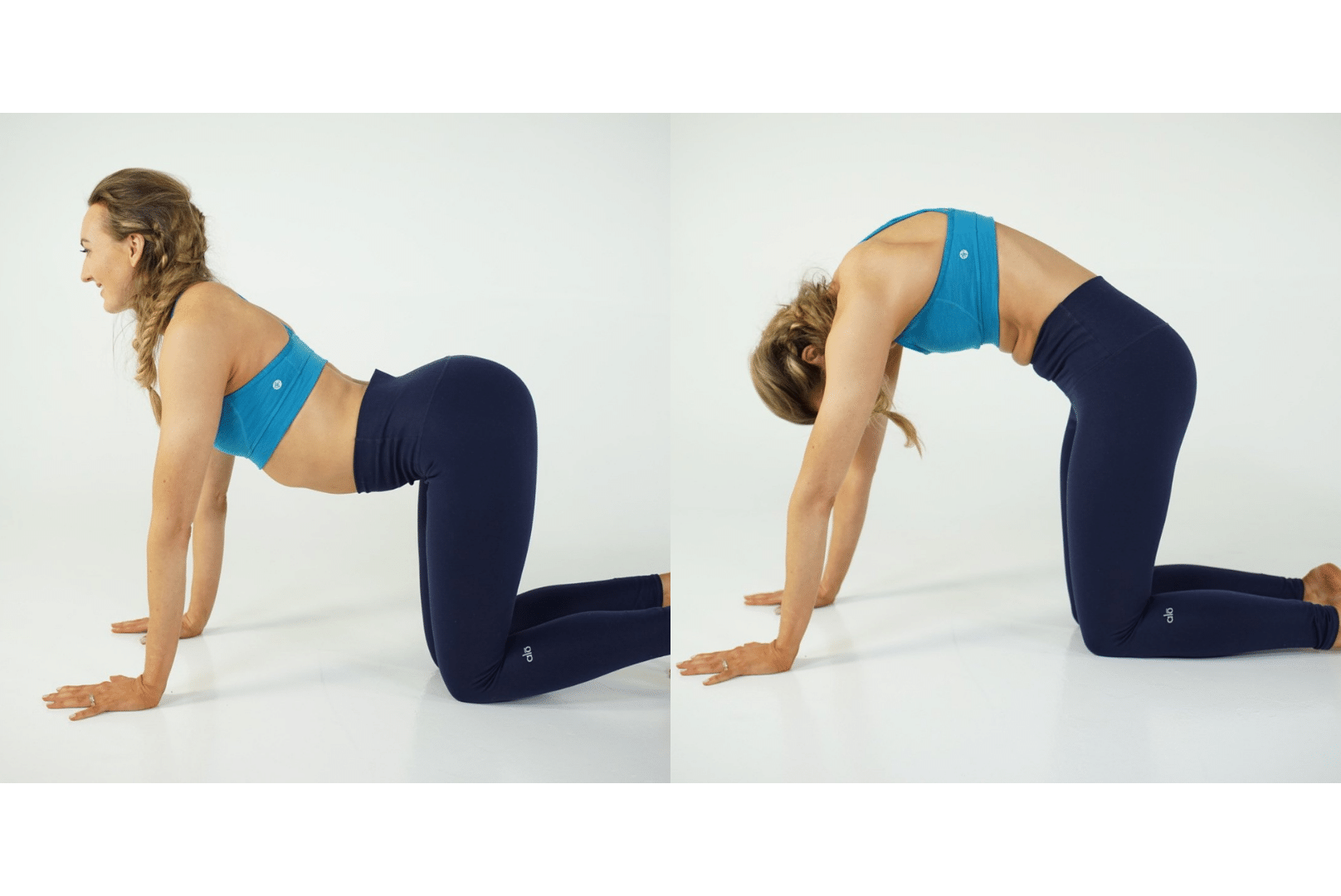
Move slowly between Cat and Cow, coordinating each movement with your breath. This flow gently releases tension in the spine and neck, areas commonly affected by stress.
Variations: Focus on moving your pelvis or pause in areas of tightness. Take a blanket under the knees or practice on the forearms if it’s more comfortable.
Benefits: Encourages spinal flexibility, calms the mind, and releases emotional tension stored in the back.
Pro Tips for Yoga Teachers:
- Increase somatic awareness by asking students to close their eyes. Ask them to notice how their awareness changes with the eyes closed.
- Allow students to explore asymmetrical movements(left leg and left arm staggered from the right) that feel best in their bodies, making this a more intuitive exercise.
Upward Facing Dog
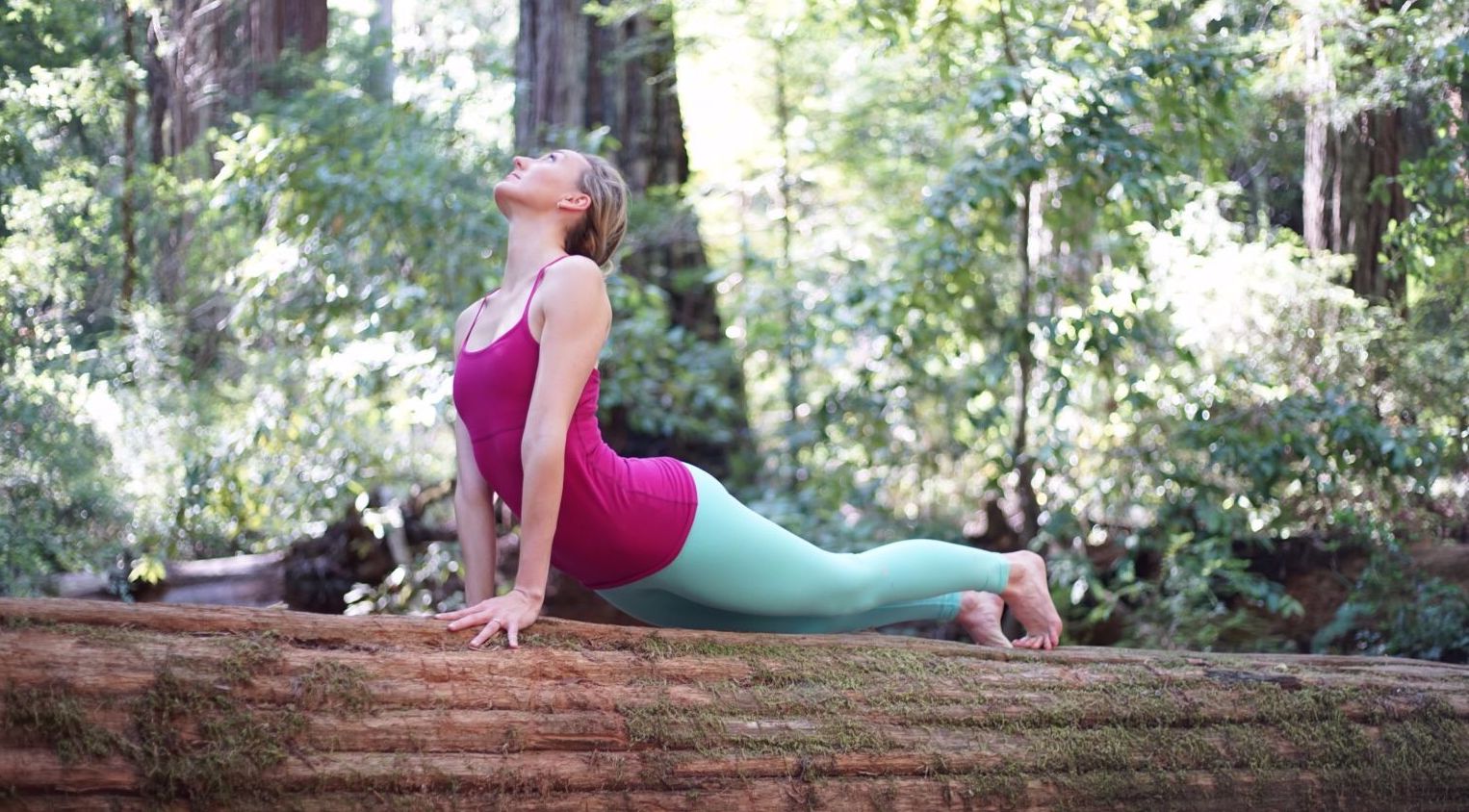
Lie with your belly on the mat. Take the palms down under the shoulders with the top of your feet touching the mat. Inhale as you push your chest up and forward, straightening your arms. Simultaneously lift and engage the thighs letting the kneecaps lift. Exhale, slowly lower back down.
Variations: Cobra is a great option if an upward facing dog does not feel good in your body. You can always take blocks under the hands or place one between the thighs too.
Benefits: Opens the chest and builds strength in the core. Also improves posture and promotes emotional resilience.
Pro Tips for Yoga Teachers:
- Ask students how they can make this more nourishing. What might feel good in their own body. Looking over one shoulder and then other or some neck rolls for example.
- Make this more somatic by bringing in visualization and encouraging students to move like seaweed, swaying slowly, come down.
Camel Pose
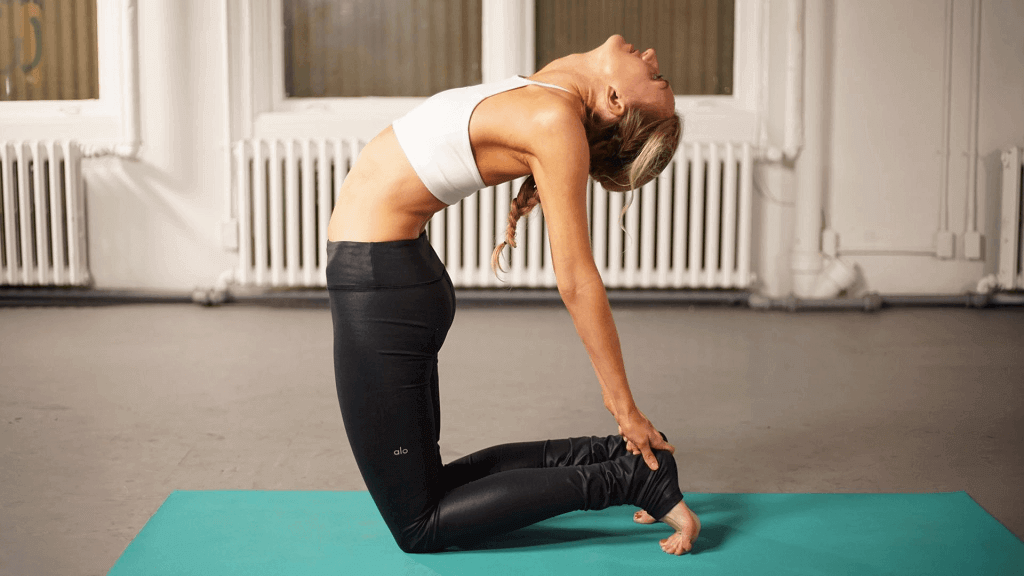
Kneel on your mat stacking your upper body directly above the knees. Shoulders, hips, knees are all in one long line. With fingers pointing down, take your hands to your low back. Broaden across the chest, pressing the hips forward as you start to lean back. Keep your core muscles engaged. Tuck the chin or relax the neck, whichever is most comfortable, and reach your hands towards your heels if that is available to you. Come back up.
Variations: Use blocks behind you instead of reaching all the way to the feet. Or, instead of reaching back, brace your hands on your low back and simple lean. No need to go into the deepest expression of this pose to get its benefits.
Benefits: This is a deep stretch for the front side of the body and builds strength through the back. As a deep heart opener it helps to clear blockages in the heart chakra helping with emotional regulation.
Pro Tips for Yoga Teachers:
- Explore expansion and contraction(polarity play) by gently moving between camel and child’s pose or sitting on the heels in a butterfly hug.
- Make this a twist: have students take one arm up to the sky while the other reaches back toward the feet looking in that same direction.
Regulation
Supported Child’s Pose
Kneel on your mat, sitting back on your heels. Take a bolster in front of you and fold forward, placing your torso over the bolster or a blanket for support.
Variations: Add gentle rocking or stretch arms forward for a deeper release.
Benefits: Calms the nervous system and releases tension in the lower back and hips.
Pro Tips for Yoga Teachers:
- Bring awareness to the present moment by guiding students to take slow, diaphragmatic breaths.
- Ask students to check in with different parts of their body, noticing where there’s tension(possibly in the jaw joint), or where there’s space and relaxation.
Legs Up The Wall
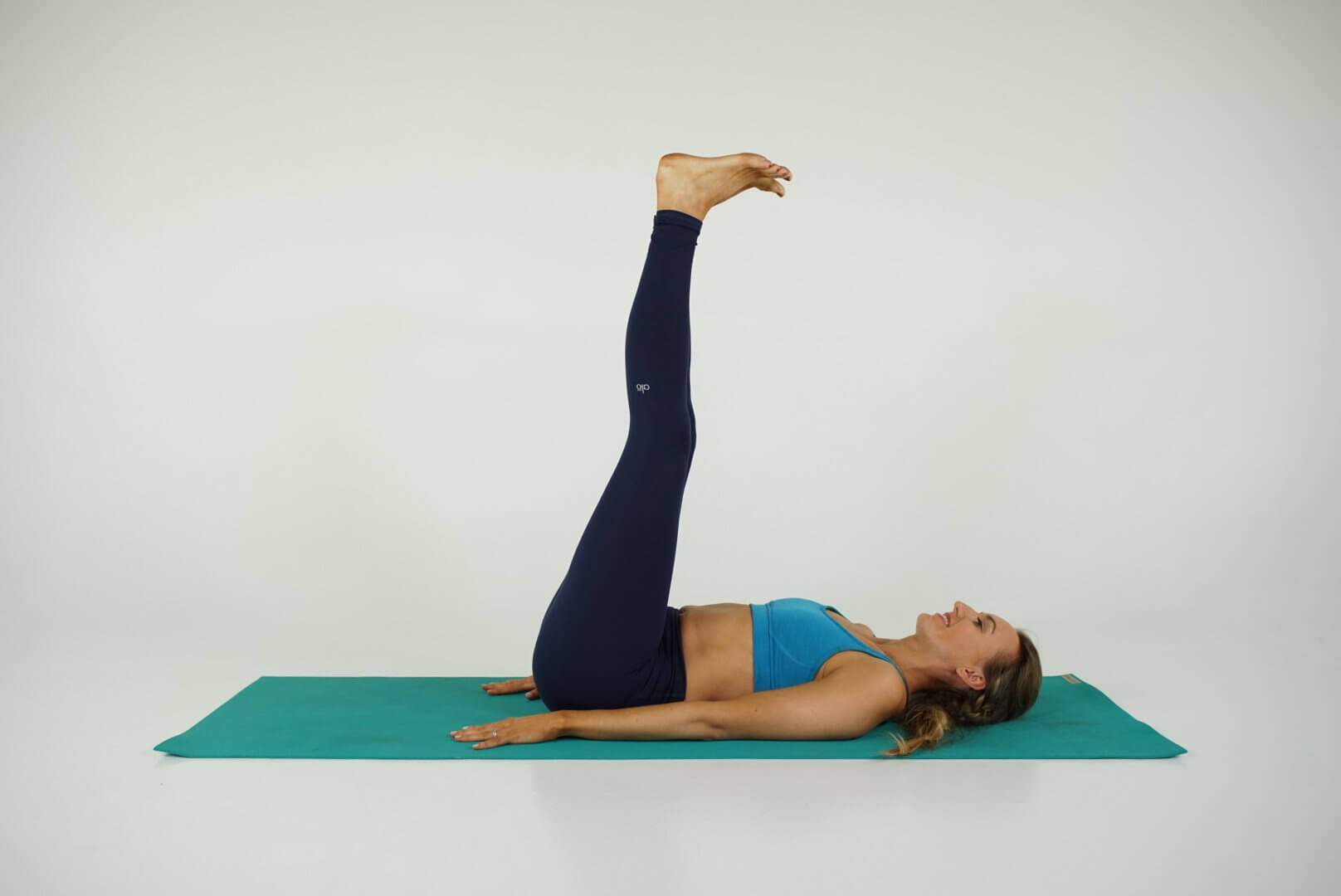
Come to lie down next to a wall. Scoot your rear as close to the wall as possible. Lift your legs and let them rest against the wall as your upper body melts into the floor. Slowly bring the legs down and rest before sitting back up.
Variations: Take the legs wide on the wall and see how that feels. If you don’t have a wall you can use a chair or the couch.
Benefits: Induces an instant calm that improves mood and reduces stress and anxiety.
Pro Tips for Yoga Teachers:
- Play with breathwork in this position. Ask students to do a box breath, or maybe even a lion’s breath to release any lingering tension.
- Students can place their feet on the wall and incorporate pelvic rocks in this position to help release energy built up in the hips.
Constructive Rest
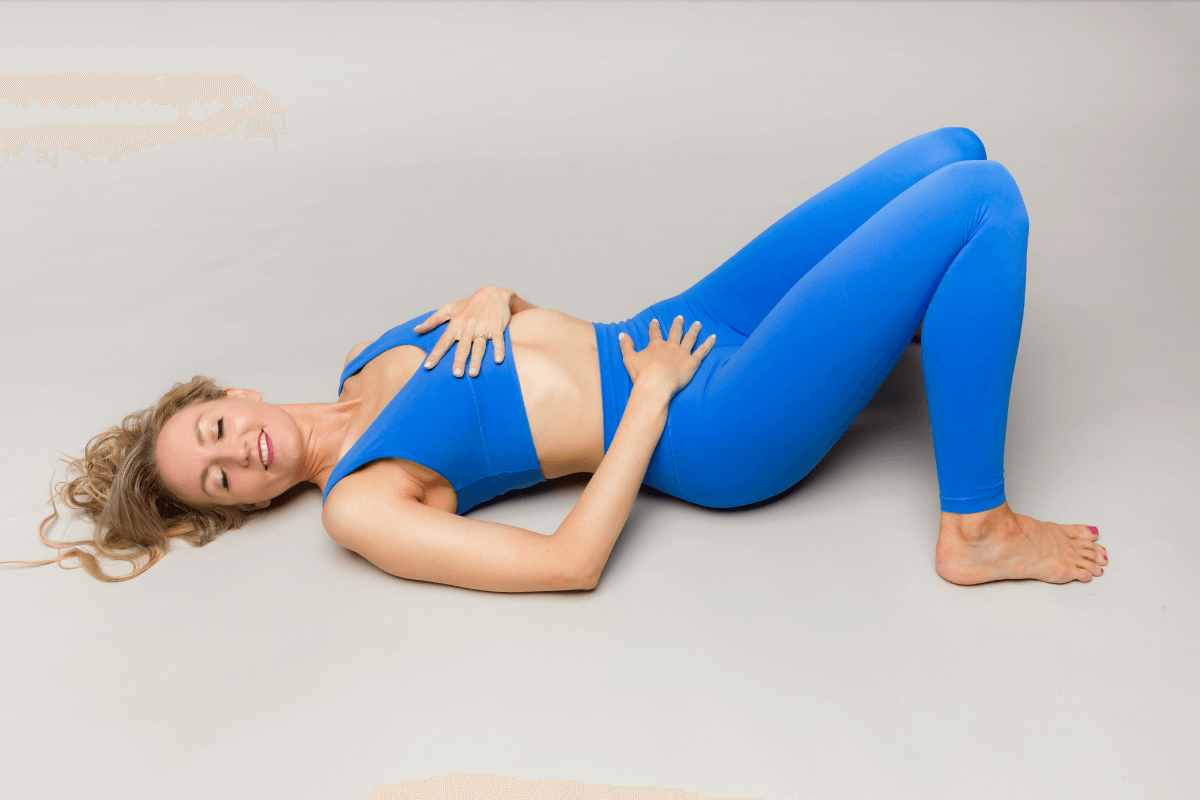
Lie on your mat with a bolster under your knees, similar to a restorative savasana. You can also bring the soles of feet to the mat and let the knees fall inward. Breathe deeply and let your body relax into the ground.
Variations: Take savasana(corpse pose) instead. Add weight for deeper relaxation like sandbags on the hips or a weighted eye mask.
Benefits: Triggers the entire body to relax, releasing tension, improving blood circulation and regulating hormones.
Pro Tips for Yoga Teachers:
- Ask students to bring awareness to their jaw. Ask them to see if their jaw opens completely and then close to encourage the area to relax.
- You can also add a nidra to this portion of your sequence.
These poses are excellent for unlocking emotional blockages and promoting a sense of calm. Explore them with intention and breath for the best results.
Closing Thoughts
If you are looking for a more personalized and guided practice you should consider somatic coaching. Or if you are a yoga teacher looking to incorporate somatics into your teaching check out my Somatic Yoga Training Certification where we combine somatic principles with yoga philosophy and life coaching tools. Truly the only certification of its kind. When I started adding somatic techniques into my practice a whole new world of healing opened up for me. I’d love for you to experience that too.
Next Steps
- Take a deep dive into embodiment and somatic yoga with my Somatic Yoga certification program.
- If you’re interested in practical kriya yoga as a way to improve your daily life and relationships, check out my Yoga for Self Mastery course.
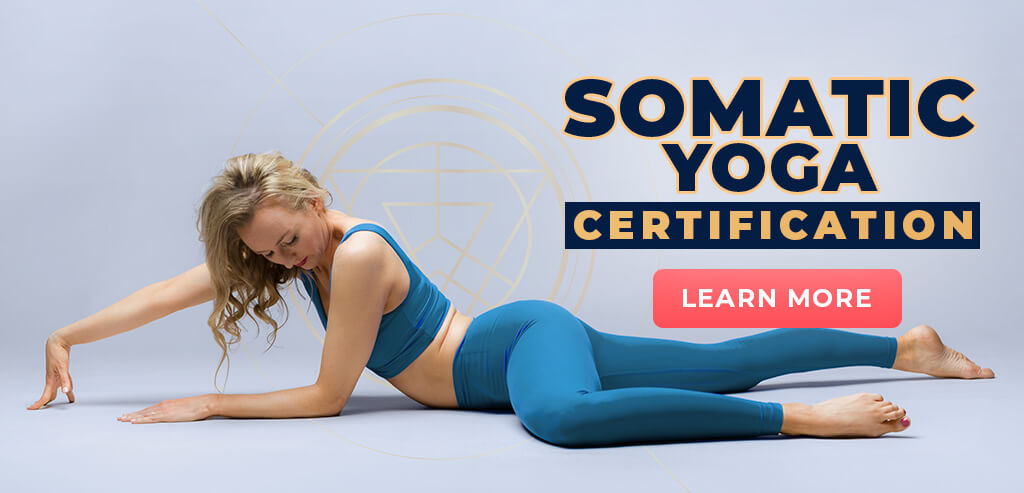
FREE Embodied Yoga Workshop (usually $67) Somatic Techniques & Cord Cutting Ritual
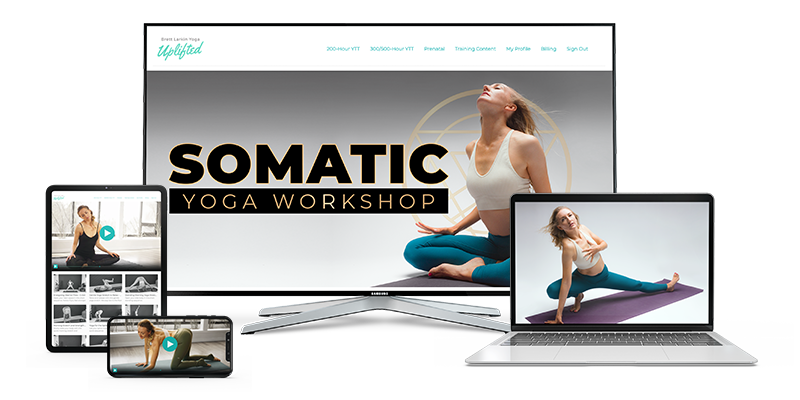
YOU MIGHT ALSO LIKE
- 7 Top Somatic Yoga Books to Regulate Your Nervous System
- 5 Best Somatic Yoga Apps for Nervous System Regulation
- Top Somatic Coaching Programs And How To Choose One
- Somatic Yoga Workshop Ideas for Teachers
- Somatic Yoga for Cortisol Detox: A Gentle Path to Stress Relief and Nervous System Healing
- Gentle Somatic Yoga: Heal Chronic Pain, Release Trauma, and Reclaim Your Bod
- Somatic Meditation: A Body-Based Approach to Healing Stress, Anxiety, and Trauma
- Advanced Pelvic Floor Breathing: A Somatic Approach to Healing
- Somatic Yoga For Yoga Teachers: Everything You Need to Know in 10 Steps
- How Somatic Shaking Can Release Tension and Reset Your Nervous System
- Discover Somatic Pilates: Enhance Your Body Awareness and Flexibility
- Kundalini for Feminine Energy: Ignite Your Creative Power and Passion
- 6 Effective Somatic Yoga for Neck and Shoulders
- How to Teach Somatic Yoga: A Practical Guide for Instructors
- The Best Somatic Exercises for Grief: Find Healing Through Movement
